We have come to expect connected devices to be an integral part of our daily lives. From making decisions, answering questions, to finding our own misplaced belongings (even lost dogs), the Internet of Things (IoT) has significantly impacted our demand for solutions that help improve efficiency and make our lives simpler.
However, in hospitals, nurses don’t have Amazon’s Alexa (Nasdaq: AMZN) or Apple’s Siri (Nasdaq: AAPL) to help them quickly locate important hospital equipment. In fact, nurses are spending up to an hour during each shift searching for devices that when found, are broken or in use.
At the same time, hospital executives are regularly evaluating methods to reduce costs, while improving the delivery of care. Ineffective asset management and its underlying effects on productivity, costs, patient safety, and employee satisfaction play a significant role in achieving this balance. It is estimated that hospitals are spending $93 billion each year on medical equipment lifecycle costs (MELC) and hospital equipment represents one of the largest spikes in healthcare spending.
Ineffective asset management as a result of lost, unmaintained, or over and underutilized equipment has created an immediate challenge for efficient asset management, which has direct implications on cost savings. According to Becker’s CFO Report, hospitals are missing savings as much as 12 to 16% due to a lack of accurate information and the bandwidth of internal resources to efficiently manage and allocate important hospital equipment.
How can organizations leverage Asset Tracking technology to reduce costs, eliminate waste, and improve the patient experience?
Implementing a technology solution like Asset Tracking is one important step to solving ineffective asset management. In order for hospitals and biomedical engineering, nursing, and facility management teams to make collaborative and informed decisions across the medical equipment lifecycle – purchasing, repairing, and allocating; accurate information on the location and utilization of equipment is key.
Asset Tracking systems have existed for over a decade, but have been cost prohibitive to deploy. SwipeSense set out to create an affordable solution for the masses. With the SwipeSense Asset Tracking system, hospital equipment is assigned a Real-Time Location System (RTLS) tag that monitors location, usage, and status of the device. With this asset tracking data hospitals can:
-
Reduce costs of new purchases through loss prevention
-
Improve strategic purchasing decisions based on lost, broken, overutilized or underutilized equipment
-
Efficiently manage timing for preventative maintenance, reducing costs of broken equipment and helping to meet Joint Commission standards
-
Decrease the time nurses spend looking for equipment during a shift, helping to improve workflow and patient experience
-
Allocate funds for capital planning more effectively based on asset utilization (I.e. do we really need 5 new infusion pumps?)
-
Create system-wide approach to track assets that move from one facility to another
Most Commonly Tracked Hospital Assets
Based on SwipeSense data, here is a list of the top 20 individual hospital assets commonly ‘tagged’ or tracked using SwipeSense Asset Tags:
Hospitals that leverage SwipeSense Asset Tracking Technology see results
SwipeSense Asset Tracking provides real-time, room accuracy level data, enabling hospitals in our network to:
-
Reduce costs of lost assets: Hazard ARH Medical Center saved $84,000 last year as a result of tracking telemetry boxes in their facility. These small devices, which can cost up to $6,000, are often lost during or after use, particularly in the laundry, amounting in excessive replacement costs.
-
Improve asset management: Novant Health Matthews Medical Center reduced the facility’s lost asset rate to as low as 3% within the first 6 months of implementing SwipeSense. The data has allowed them to optimize the daily status of on-hand equipment, improving efficiency and decreasing the amount of time nurses spend looking for equipment during each shift.
Download the full case study to learn how Matthews Medical Center leveraged both SwipeSense Asset Tracking and electronic Hand Hygiene monitoring to accelerate patient safety and reduce costs.
Get Started
Our innovative RTLS platform powers applications, including Hand Hygiene Monitoring, Asset Tracking, and Nursing Insights, all designed to eliminate waste and improve patient outcomes.
Schedule a strategy session to help better understand your organization’s potential ROI and the ways our platform can support system-wide goals.
